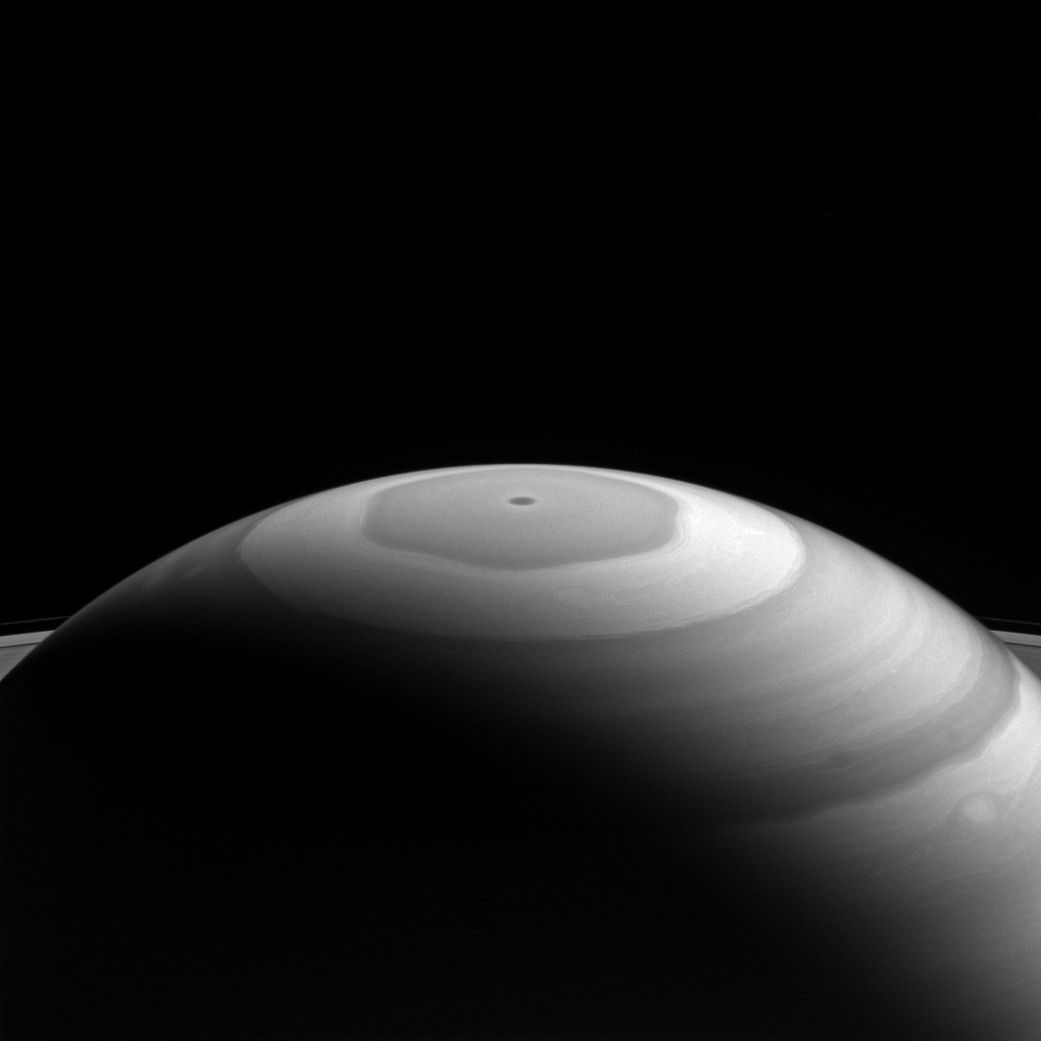Bizarre Hexagon on Saturn Shines in Spectacular NASA Photo

A stunning new photo of Saturn's north pole spotlights the planet's bizarre hexagon-shaped vortex and beautiful bands of swirling winds.
NASA's Cassini spacecraft captured this dramatic view on Sept. 5, as the probe flew 890,000 miles (1.4 million kilometers) above the planet. The image, which NASA released Monday (Nov. 14), looks toward the sunlit side of Saturn's rings.
A six-sided jet stream known as "the hexagon" — which measures approximately 20,000 miles (32,000 kilometers) wide — swirls above Saturn's north pole, with wind speeds reaching upward of 200 mph (322 km/h). The dark spot seen in the center of the vortex is believed to be the eye of the hurricane-like storm, NASA officials said in a statement debuting the image. [Stunning Photos: Saturn's Weird Hexagon Vortex Storms]
This unique weather system on Saturn was first spotted by NASA's Voyager mission in the early 1980s. In addition to the strange hexagonal vortex, the planet boasts thick, beautiful bands, which are created by superfast winds in the upper atmosphere.
"Each latitudinal band represents air flowing at different speeds, and clouds at different heights, compared to neighboring bands," NASA officials said in the statement. "Where they meet and flow past each other, the bands' interactions produce many eddies and swirls."
The newly released image captures an up-close view of Saturn's beautiful bands, "which somewhat resemble the brushwork in a watercolor painting," NASA officials said.
The Cassini spacecraft has been orbiting Saturn since 2004, providing high-resolution images of the ringed planet. The probe is in the last year of its mission and will end its life with an intentional dive into the planet's atmosphere in September 2017.
Get the world’s most fascinating discoveries delivered straight to your inbox.
Follow Samantha Mathewson @Sam_Ashley13. Follow us @Spacedotcom, Facebook and Google+. Original article on Space.com.

